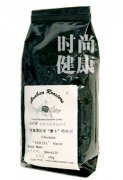Kitchen trick: don't use stagnant water to make coffee
Nowadays, many friends like to brew coffee at home, especially when they are together with good friends. But how do you make a good cup of coffee at home?
You know, a cup of coffee is almost 98 percent water, so water is a very important element here. Many friends use distilled water or purified water to brew coffee. They think that these waters will bring out the real taste of coffee without impurities, and they will be better than tap water. Let me start with tap water. Generally speaking, for example, lime is used to neutralize rain acid in water treatment works in Hong Kong. Strictly speaking, the lime content in the final output for drinking has been reduced to a minimum, but it is expected to contain lime and magnesium substances. In addition, the pipes hidden underground may have been used for many years and there may be sediments, and even the pipes may have rusted. The mixture of these chemical substances will cause great damage to coffee. Will it be useful to install cotton or carbon filters at home? The effect may be better, because the cotton core can absorb impurities in the water, while the carbon core will remove odors. Friends who really know coffee know that whether distilled water or pure water is used to brew coffee, that cup of coffee will not have life, and the author calls those waters "dead water" because they are tasteless like drinking air.
It is not good to use water that is too hard or too soft to make coffee. It is best to use water that is moderately hard and low in minerals. How do you make water at home soft and hard? In addition to installing filters, use water softeners! Because the negative ions in the water softener can decompose the lime and magnesium in the water, so that the water quality is neutralized.
Some friends misunderstood when brewing coffee to use large boiling water (water temperature 100℃), because the Chinese say "water boiling tea", but the original brewing coffee temperature is best 88℃ to 94℃, this refers to the contact point temperature of water and coffee powder, because large boiling water will only destroy the original taste of coffee, it will release the bitter substances of coffee and excessive alkaline substances and even excessive tannins. In the process of brewing coffee, the contact between water and coffee is only three minutes, but also depends on the grinding degree of those beans and the utensils used to make coffee, so do not soak coffee in hot water for too long, especially fine ground coffee, because the more finely ground coffee powder, the more it will accelerate the contact range of coffee in water, the taste of coffee powder volatilized.
Important Notice :
前街咖啡 FrontStreet Coffee has moved to new addredd:
FrontStreet Coffee Address: 315,Donghua East Road,GuangZhou
Tel:020 38364473
- Prev

The cooking method of siphon pot
Siphon (siphon) coffee pot, also known as plug air pot, real pot, uses the principle of siphon to make coffee. The cooking process is full of experimental drama, and the conditioning process is simple, but the boiled coffee has a special mellow degree and aroma, which can not be compared with the ground coffee brewed by machine. This method is especially suitable for tasting non-heavily roasted coffee. Step: 1Step to rainbow
- Next

Six famous coffees in the world (group pictures)
Origin of mocha coffee: Ethiopian characteristics: high-quality coffee, slightly lubricated medium acid to strong acid, moderate sweetness. How to drink: mostly for a single drink, but also can make mixed coffee. Blue Mountain Coffee producing area: Jamaica, the Blue Mountains surrounded by the Caribbean Sea, more than 1525 meters above sea level. Features: the best coffee, the output is very small. The taste is rich and mellow, with sweetness and no bitterness.
Related
- How did the Salvadoran coffee industry develop in Central America?
- What exactly does the golden cup extraction of coffee mean?
- The Origin of Coffee flower
- [2023 Starbucks World Earth Day] there are more meaningful things besides free Starbucks coffee!
- What kind of coffee is there in Spain? 9 Flavors of Spanish Coffee
- Aromatic African coffee| Kenya's coffee culture and historical production area
- Liberica Coffee Bean knowledge: the characteristics of Liberian Coffee beans of the three original species of Coffee beans
- The origin and formula of Spanish latte introduces the taste characteristics of Bombon coffee in Valencia, Spain.
- How to adjust the solution of over-extracted coffee
- What is the tasting period of coffee beans? What is the period of coffee and beans? How should coffee wake up and raise beans?

